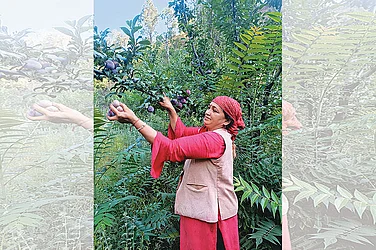The pandemic-induced work-from-home (WFH) culture and online classes for students is witnessing a big spike in the generation of e-waste in India and could lead to an environmental catastrophe due to their haphazard disposal, experts have warned.바카라 웹사이트바카라 웹사이트
India is the world라이브 바카라 third largest producer of e-waste—electronic garbage such as television sets,바카라 웹사이트computer peripherals, laptops, mobile phones and others—after the US and China.바카라 웹사이트
India generated over 10 lakh tonnes of e-waste during 2019-20.바카라 웹사이트바카라 웹사이트
Experts cite data to say that on an average, each family has now more than 2 laptops and 4 mobile phones. The discarding of such a large amount of e-waste carelessly will impact the environment severely, further contributing to climate change. Though India바카라 웹사이트has a legal framework for handling e-waste since 2011, the rules are frequently violated due to lack of awareness among the people.바카라 웹사이트In India, around 95% of e-waste is still handled by informal sector.바카라 웹사이트바카라 웹사이트
The disposal of e-waste in garbage bins and dumps contributes significantly to climate change as many chemicals are released when they are burned along with other waste. Electronics contain materials like copper, aluminium and iron and when equipment are burnt they accumulate these metals in air.바카라 웹사이트바카라 웹사이트
There are various legislations like Hazardous Wastes (Management and Handling) Amendment Rules, 2003, Guidelines for Environmentally Sound Management of E-waste, 2008 and E-waste (Management and Handling) Rules, 2011 to regulate the disposal and management of e-waste in India. However, their implementation is mostly on papers. A Comptroller and Auditor General (CAG) audit report found that over 75 per cent of state bodies were not implementing these laws.바카라 웹사이트
Pascal Leroy, director general of the WEEE Forum, says, “Many factors play a role in making the electrical and electronics sector resource efficient and circular.바카라 웹사이트But one thing stands out: as long as citizens don’t return their used, broken gear, sell it, or donate it, we will need to continue mining all-new materials causing great environmental damage.” He adds that on바카라 웹사이트October 14, the organisation celebrated International바카라 웹사이트E-Waste바카라 웹사이트Day with focus on making e-products a circular economy.바카라 웹사이트바카라 웹사이트
Brussels-based WEEE Forum, a not-for-profit international association representing 45 organisations across the world, says바카라 웹사이트global바카라 웹사이트e-waste바카라 웹사이트generation is growing annually by 2 million tonne, or about 3 to 4%, a problem attributed to higher consumption rates of electronics (increasing 3% annually), shorter product lifecycles and limited repair options.바카라 웹사이트
According to the UN, in 2021 each person on the planet will produce on average 7.6 kg of e-waste, meaning massive 57.4 million tonnes will be generated worldwide. Only 17.4 per cent of this electronic waste containing a mixture of harmful substances and precious materials will be recorded as being properly collected, treated and recycled. This year라이브 바카라 mountain of바카라 웹사이트waste바카라 웹사이트electronic바카라 웹사이트and electrical equipment (WEEE) will total about바카라 웹사이트57.4 million tonnes—greater than the weight of the Great Wall of China, Earth라이브 바카라 heaviest artificial object.바카라 웹사이트
Ruediger Kuehr, director of the SCYCLE Programme and Head of UNITAR라이브 바카라 Office in Bonn, the value of EEE components in the world라이브 바카라 ‘urban mines’ is enormous.바카라 웹사이트“A tonne of discarded mobile phones is richer in gold than a tonne of gold ore,” Dr. Kuehr points out.바카라 웹사이트“Embedded in 1 million cell phones, for example, are 24 kg of gold, 16,000 kg of copper, 350 kg of silver, and 14 kg of palladium—resources that could be recovered and returned to the production cycle. And if we fail to recycle these materials, new supplies need to be mined, harming the environment.”바카라 웹사이트He adds that바카라 웹사이트the recovery of gold and other material from바카라 웹사이트waste바카라 웹사이트saves carbon dioxide emissions when compared with virgin metal mining.바카라 웹사이트바카라 웹사이트
Notably, corporates in India are also moving to new initiatives to handle their e-waste. IT major Accenture in바카라 웹사이트October 2020, set three industry-leading sustainability goals for themselves globally. These are achieving net-zero emissions, moving to zero waste and planning for water risk by 2025.바카라 웹사이트By 2025, Accenture plans to reuse or recycle 100% of its e-waste, such as computers and servers.바카라 웹사이트바카라 웹사이트
Talking to 바카라, Accenture spokesperson said, “We are making significant strides towards these goals in India…we have already achieved 69% of our waste recycling goals.”바카라 웹사이트
The company is also donating its IT equipment such as desktops to support local communities by supporting access to education.바카라 웹사이트The company has donated바카라 웹사이트thousands of its desktops to NGOs supporting education as part of the “Digital Daan” initiative by Digital Empowerment Foundation (DEF).바카라 웹사이트
The spokesperson said, “The pandemic and consequent school closures have widened the existing digital divide in India. When schools and colleges closed, millions of disadvantaged students in India found themselves with no means to access digital classrooms as only a small section of Indian households possess a computer, laptop or tablet. That라이브 바카라 why, we have been on a mission to enable continuous learning for all through our desktop donation initiative.”바카라 웹사이트
Environmental experts says public awareness and discarding e-waste responsibly by public along with government라이브 바카라 initiative to push for re-cycling of this e-waste could help India arrest the problem before it라이브 바카라 too late.바카라 웹사이트바카라 웹사이트














